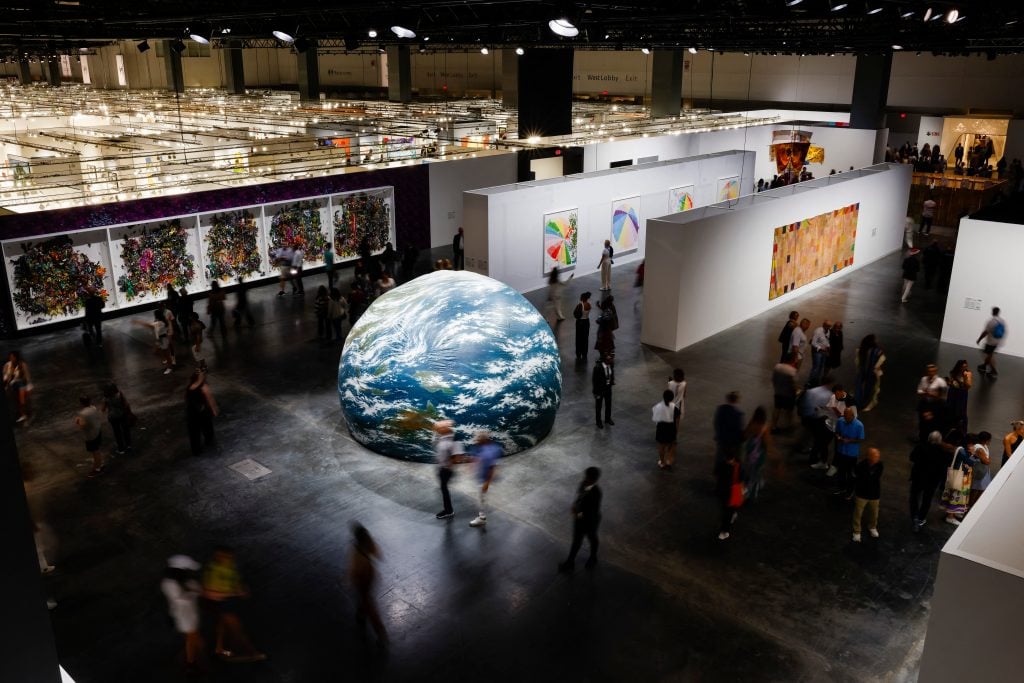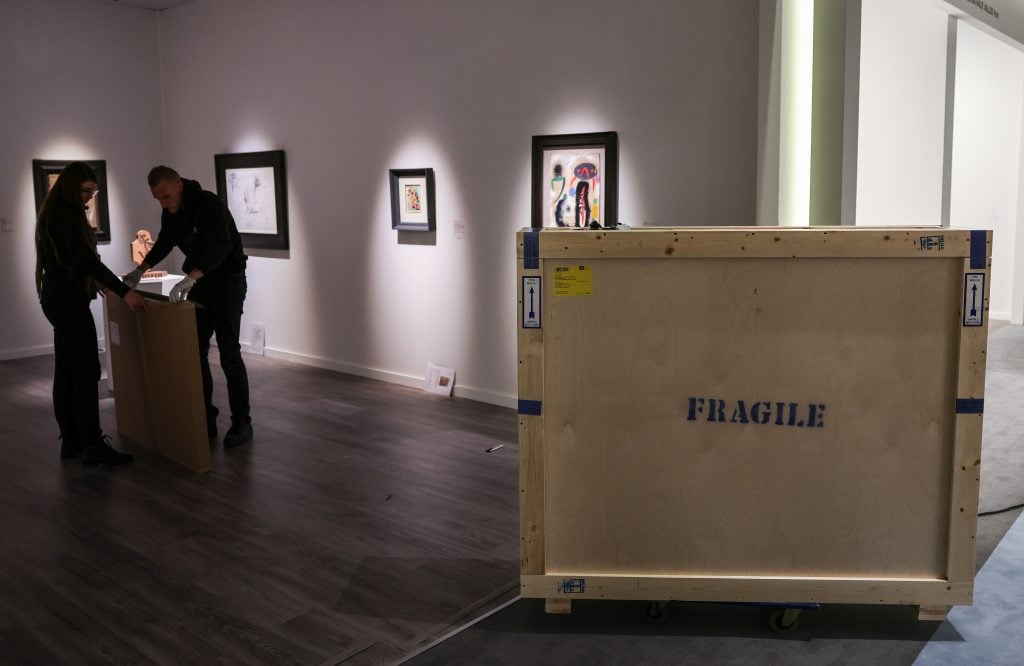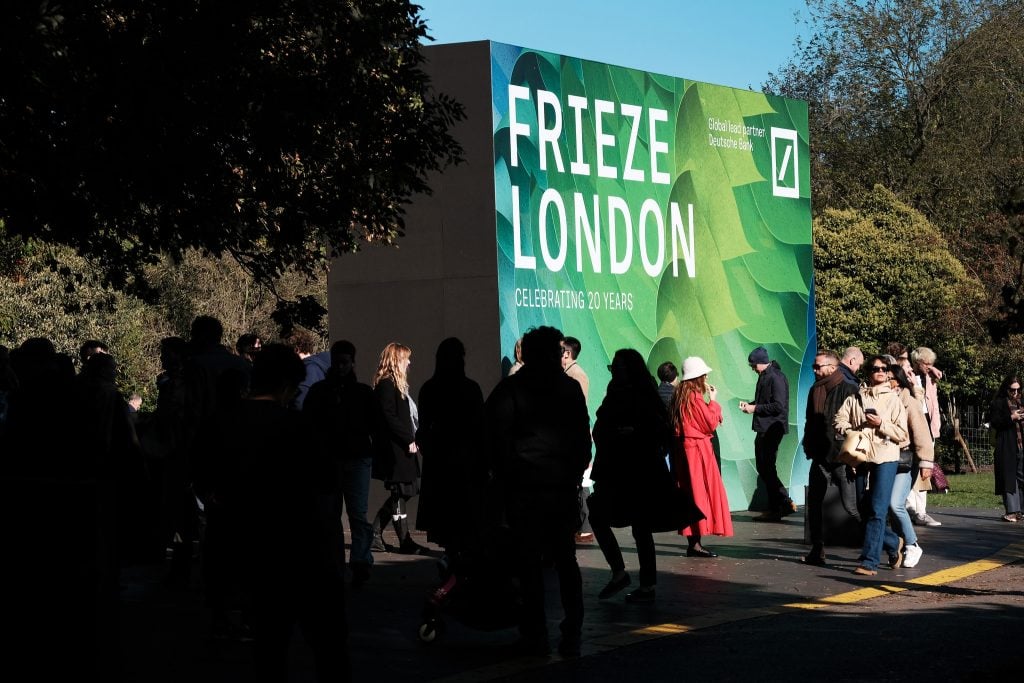Art Fairs
Frieze and Art Basel Among 40 Art Fairs Uniting for Groundbreaking Green Initiative
Can art fairs cut their emissions in half by 2030? Leading events have committed to try.

Can art fairs cut their emissions in half by 2030? Leading events have committed to try.

Jo Lawson-Tancred

When it comes to the matter of sustainability in the art world, the real elephant in the room is art fairs. Any gallery committed to slashing its carbon footprint will be limited in what it can achieve if its a frequent exhibitor because, even though these events only amount to a few weeks of the year, they can easily make up about one third of a gallery’s overall emissions, according to the Gallery Climate Coalition (GCC).
This finding is of little surprise. After all, art fairs call for a major upheaval of personnel and stock, sometimes to an entirely new continent. The toll of air freight, air travel, plus all manner of single-use materials needed to design a standout booth adds up. And when most galleries rely on international fairs to grow their reach, who can be expected to take a solitary stand and withdraw from these competitive opportunities?
Understanding the pressures on individual art businesses, especially during the current market downturn, the GCC has long encouraged collaboration across the sector. So why not tackle the environmental impact of art fairs at the source?
Today, the GCC launched a new alliance of 13 organizations representing over 40 major art fairs, including Frieze, Art Basel, TEFAF, ARCO, The Armory Show, Untitled Art, and Liste Art Fair Basel. Each has pledged to adhere to the Art Fair Co-Commitment Statement, which aims to reduce emissions by at least 50 percent by 2030. Participants will following best practice guidelines, measure and report on their progress, and pool resources and knowledge.
“Leading art fairs have recognized that there is no more business as usual,” said the GCC’s director Heath Lowndes. “For the art sector, that has meant facing up to some hard truths about how it operates and starting to adapt practices accordingly.”

An art dealer unpacks paintings from shipping crates at the TEFAF Maastricht art fair. Photo: Oliver Berg/ picture alliance via Getty Images.
He added that the collaborative approach in making this groundbreaking statement, as well as the work that has gone into creating the shared resource, is “a testament to the potential for collective action to lead to systematic changes.”
Additionally, the Art Fair Toolkit for Environmental Responsibility is a resource based on internal research and real life case studies that provides initial strategies and practical steps tailored to art fairs.
This summer, the GGC’s co-founder Victoria Siddall, who has long been at the forefront of a push for environmental change within the industry, spoke to Artnet News about the practical difficulties that come with affecting meaningful change in a complex industry like the art market.
Take for example, the question of whether galleries could swap from air to sea freight when shipping artworks to an overseas destination, potentially cutting emissions by some 90 percent. Why might they be hesitant?
“Is it around insurance?,” she speculated. “In which case can we help to solve that problem? Is it around the safety of work? Is it around the time it takes? Is it around artist deadlines? And then how do we bring the artists on board with that? We want to know how we make these things possible.”

Frieze is among the fairs committed to championing sustainability. Photo: Linda Nylind. Courtesy of Linda Nylind/Frieze.
GCC was founded in 2020 as an international membership organization providing environmental sustainability guidelines for the visual arts sector. It now has over 1,100 members in 40 countries worldwide who have all committed to a 50 percent reduction in emissions by 2030 in line with the United Nations Paris Agreement. Earlier this month, the group also launched an open-access resource, the GCC Artist Toolkit, which has been designed to support artists who want to be more environmentally conscious in their practice.
Despite its success, the coalition was forced to end its International Volunteer Chapter (IVC) program two weeks ago, citing a lack of funding. The IVC initiative—which launched in 2020 in Berlin and grew to include seven chapters of self-organized volunteers in Italy, Spain, Taiwan, London, Los Angeles, and New York— represented one of the largest networks of arts professionals working to build sustainability initiatives for the trade.
“Over the past year, we have increased engagement with our volunteer groups to understand their challenges and needs,” Lowndes wrote in a letter published on GCC’s website on September 12. “The overwhelming feedback indicated that the chapters require significant financial investments to a higher degree than GCC can provide.” The coalition relies on grants and donations and does not receive governmental funds.